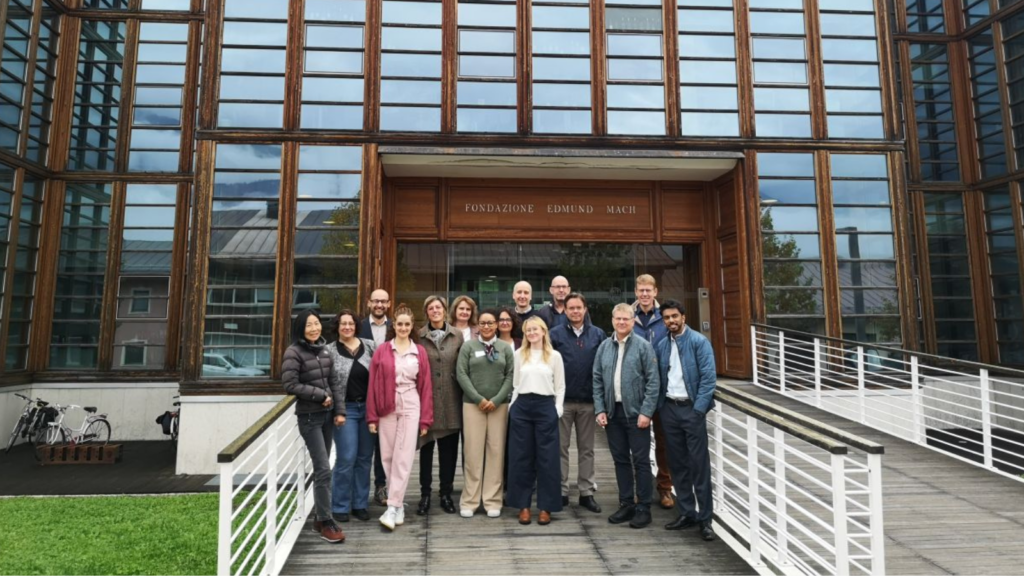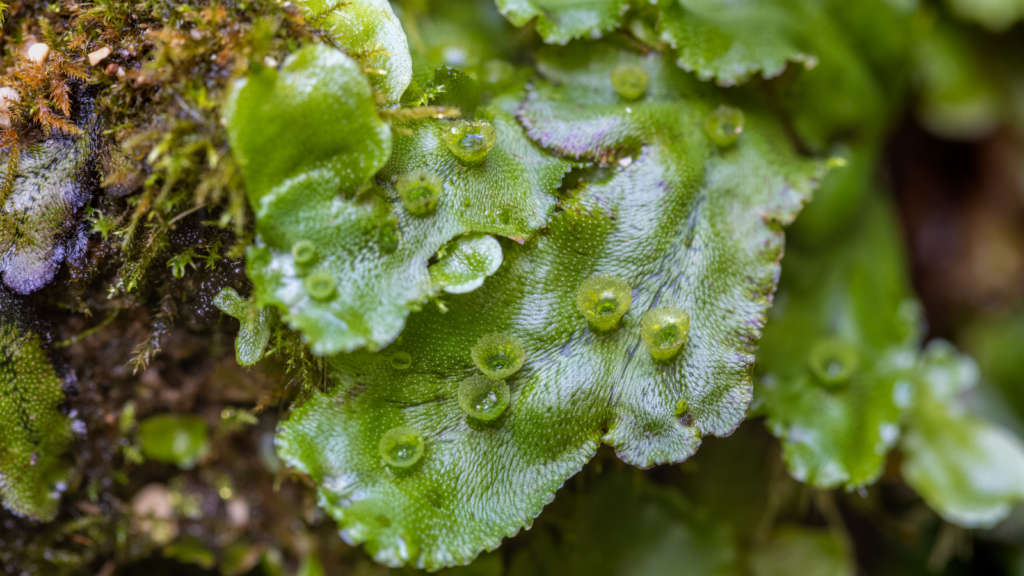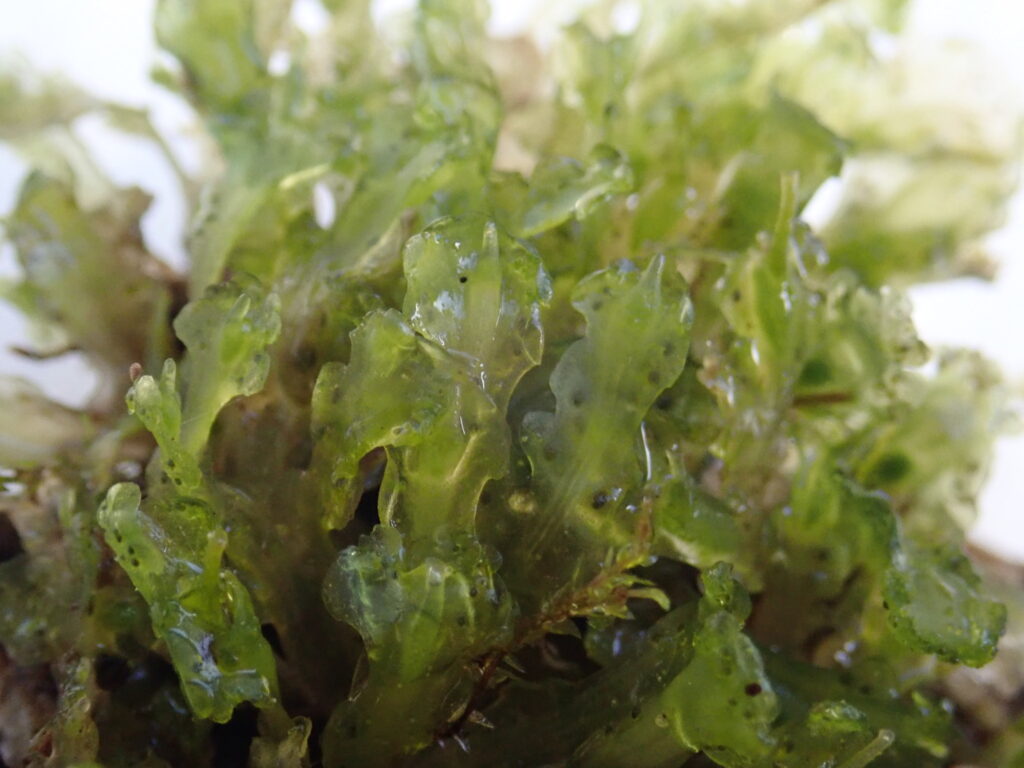Exciting advancements from our partner, Lund University!
Our partners from Lund University achieved exciting advancements and discoveries within the project this year. Over the summer, the team made significant strides by setting up and experimenting with Plantform© Bioreactors, familiarising themselves with optimal growth processes. Since then, they have established 48 bioreactors, cultivating 46 mosses and two liverworts.

Polytrichum formosum, pictured under a stereo microscope
Bioreactors
The team has been utilising Plantform© Bioreactors to micropropagate cultures. These immersion-type bioreactors temporarily submerge the cultures in liquid at regular intervals, which are controlled and adjusted using timers.
Workflow
- Collection: Bryophytes are primarily collected in the autumn, though collection timing may vary
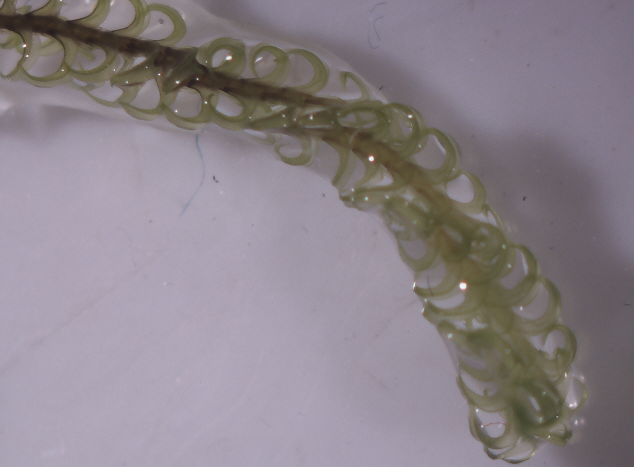
Racomitrium macounii, pictured under a stereo microscope.
- Sterilisation: Gametophytes or sporophytes are sterilized and plated on agar. The team monitors for bacterial or fungal contamination using glucose.Once the bryophytes show sufficient growth, portions are transferred to liquid culture in a sterile environment.
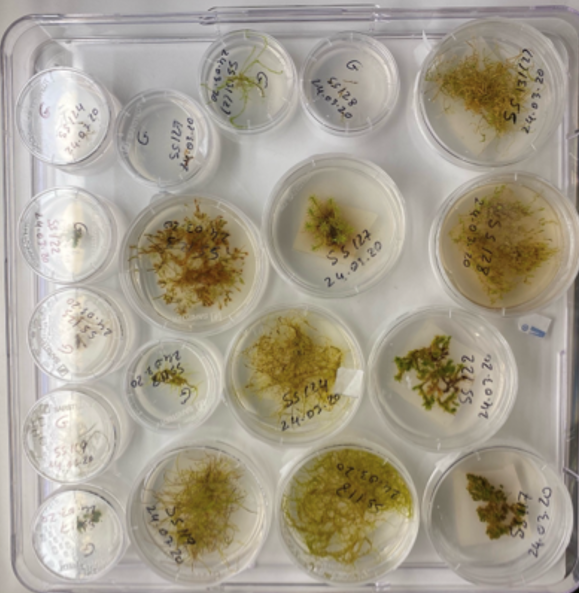
Once the bryophytes show sufficient growth, portions are transferred to liquid culture in a sterile environment.
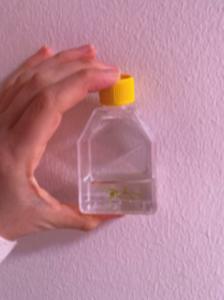
Bryophytes are moved to Plantform© Bioreactors for further propagation.
Challenges
In natural environments, bryophytes engage in complex interactions with microbes. However, microbial infections can harm bryophytes and compromise results during controlled experimental growth. Maintaining sterile conditions is essential but challenging. Despite best efforts, fungal and bacterial infections occasionally occur, necessitating culture restarts, infection cleanups, or re-sterilization. Striking the right balance between eliminating microbes and preserving bryophytes often requires multiple attempts.
Next steps
While colleagues at Lublin University of Technology analyse the chemical composition of bryophytes, team members at Fondazione Edmund Mach perform RNA extractions to assess gene functions. At Lund University, the focus continues on further bioreactor experiments and allelopathy research, alongside ongoing efforts to cultivate bryophytes, with a particular shift toward liverwort species.
Author : Eliza Hayse
